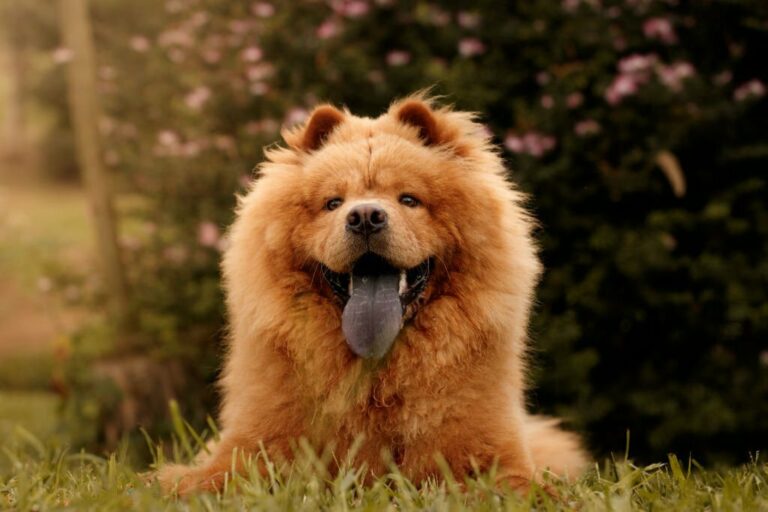Groom and Temperament: Chow Chow Dog Breed
The Chow Chow holds a rich heritage originating from China. Known for their impressive mane and distinctive blue-black tongue, these dogs carry themselves with a regal presence. They tend to be independent and may take a cautious approach to strangers, yet they are very devoted and affectionate with their owners.
Their sturdy build and thick coat call for regular grooming, and they’re versatile enough to fit into different home settings as long as they get enough physical activity. To guide their strong-willed nature, starting socialization and training early on is essential. This helps prevent any unwelcome territorial tendencies.
Chow Chows also have specific health needs, so proactive care and routine vet visits are vital to keeping them healthy.
Key Takeaways
- Chow Chows hail from China, known for their blue-black tongue.
- Early socialization curbs their territorial instincts, training is vital.
- Regular vet check-ups are essential to maintain their health.
Quick Facts
In the American Kennel Club’s rankings, the Chow Chow holds a respectable 92nd place, showing that it has a loyal but niche group of admirers. This breed stands between 17 and tand20 inches tall and usually weighs between 45 and 70 pounds, sporting a sturdy and well-proportioned build.
They have a lifespan of 8-12 years, which promises a lengthy period of companionship, provided they receive the proper care, though sometimes they are aloof. The Chow Chow, part of the Non-Sporting Group, is valued for its distinctive look and calm demeanor rather than any specific working role.
Chow Chow Pictures
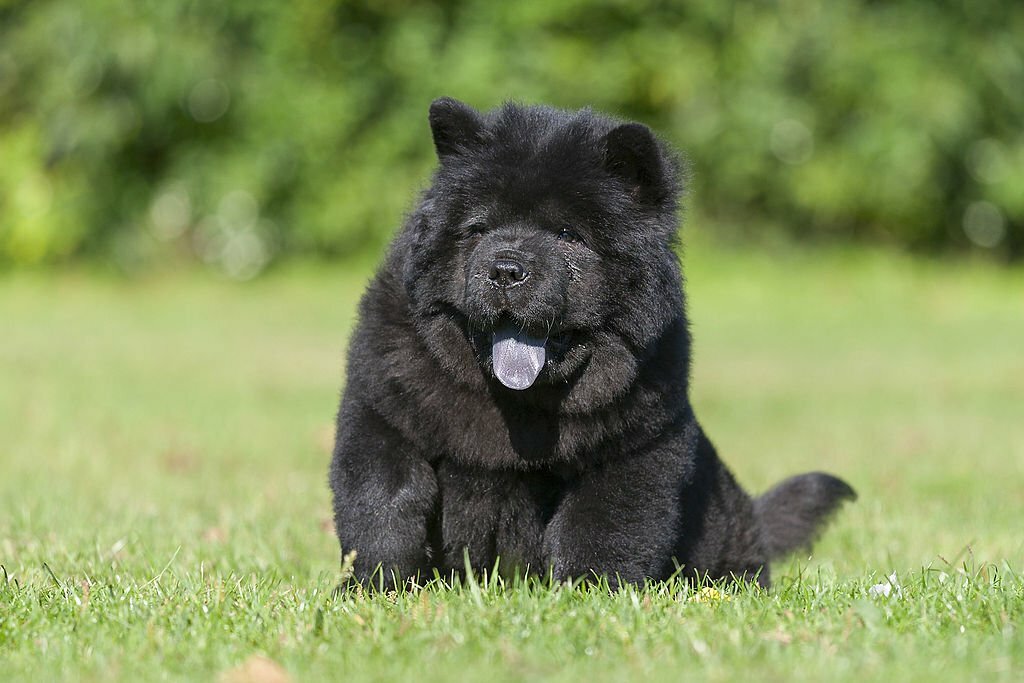
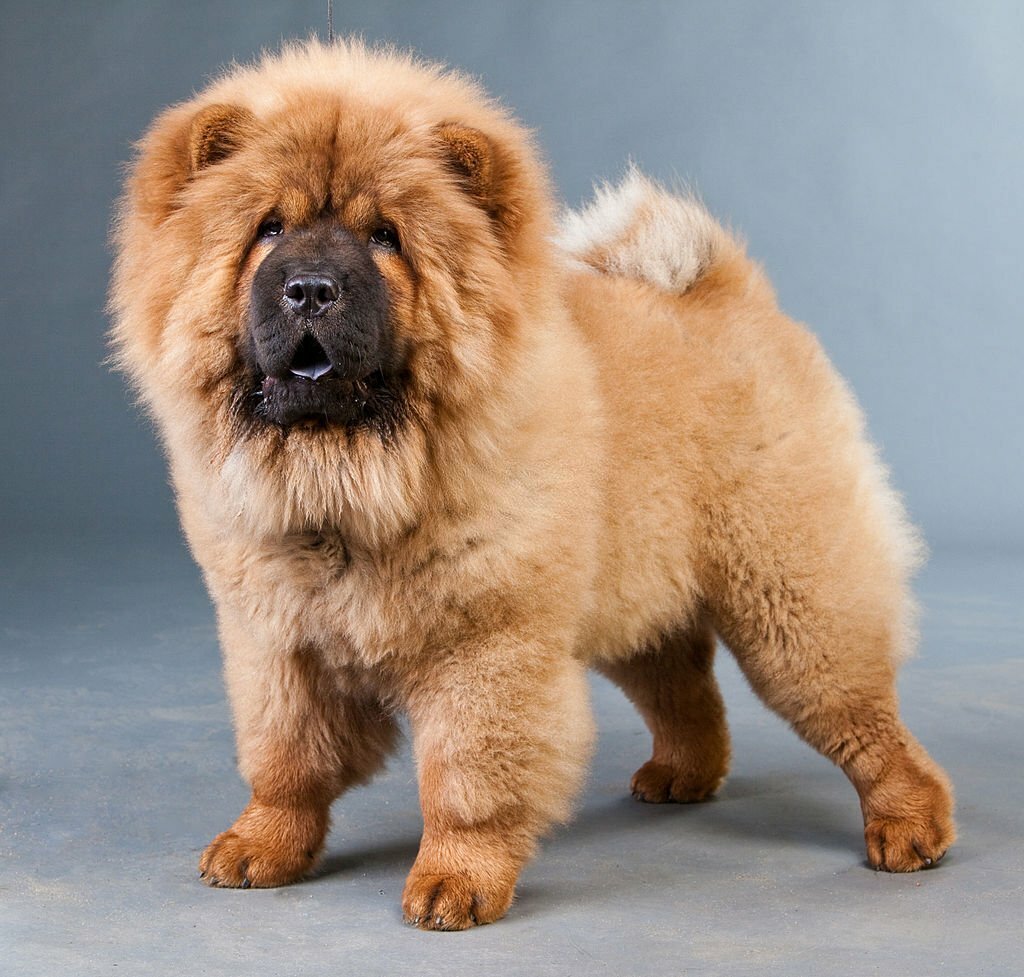
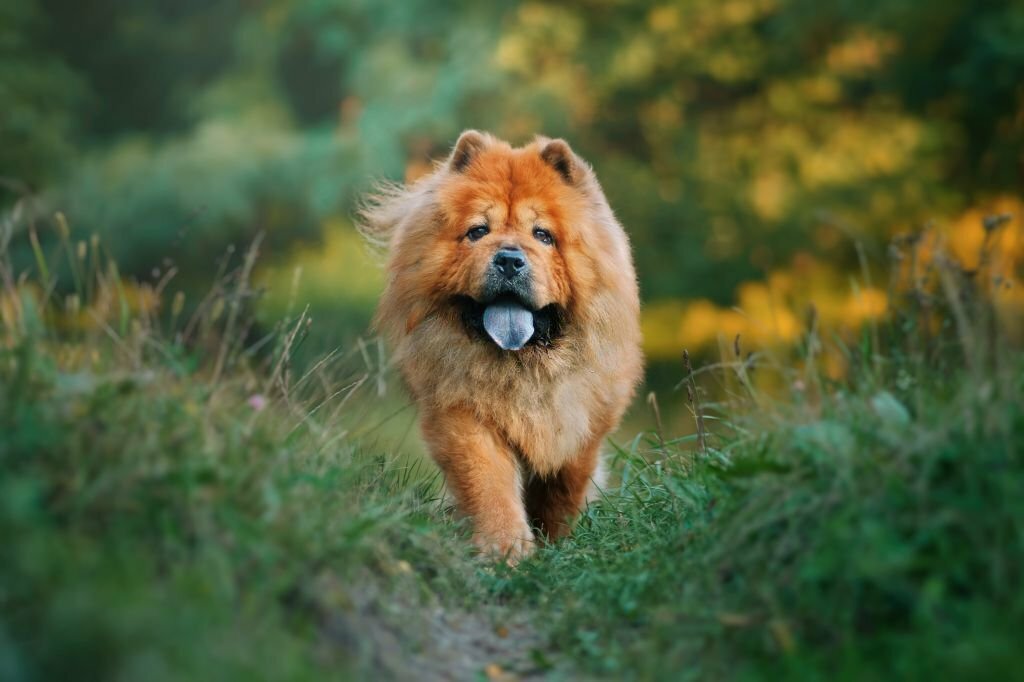
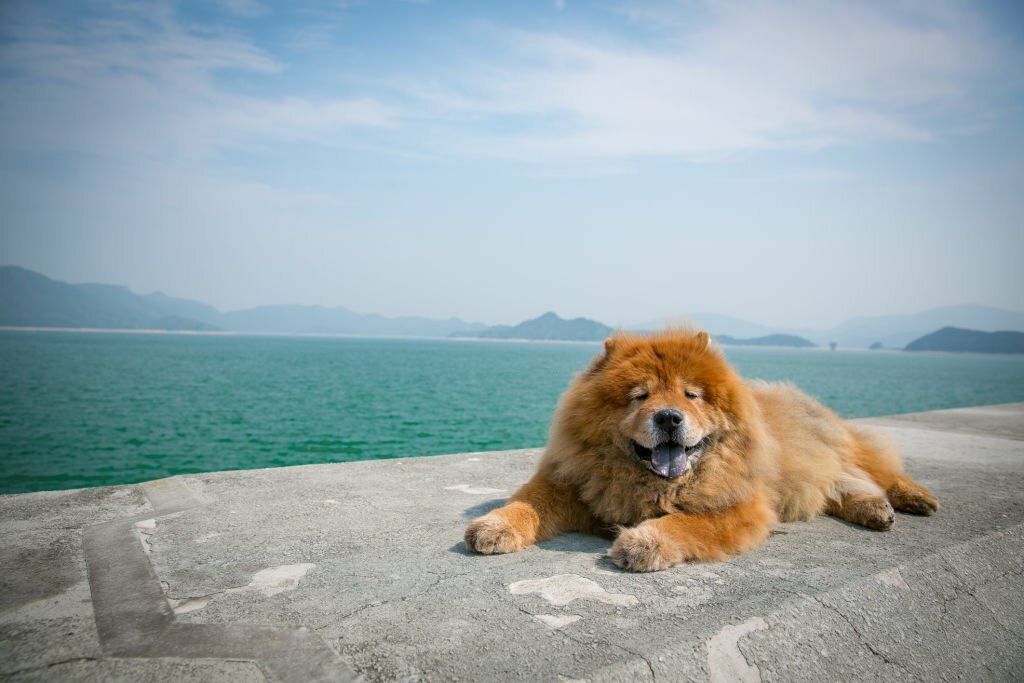
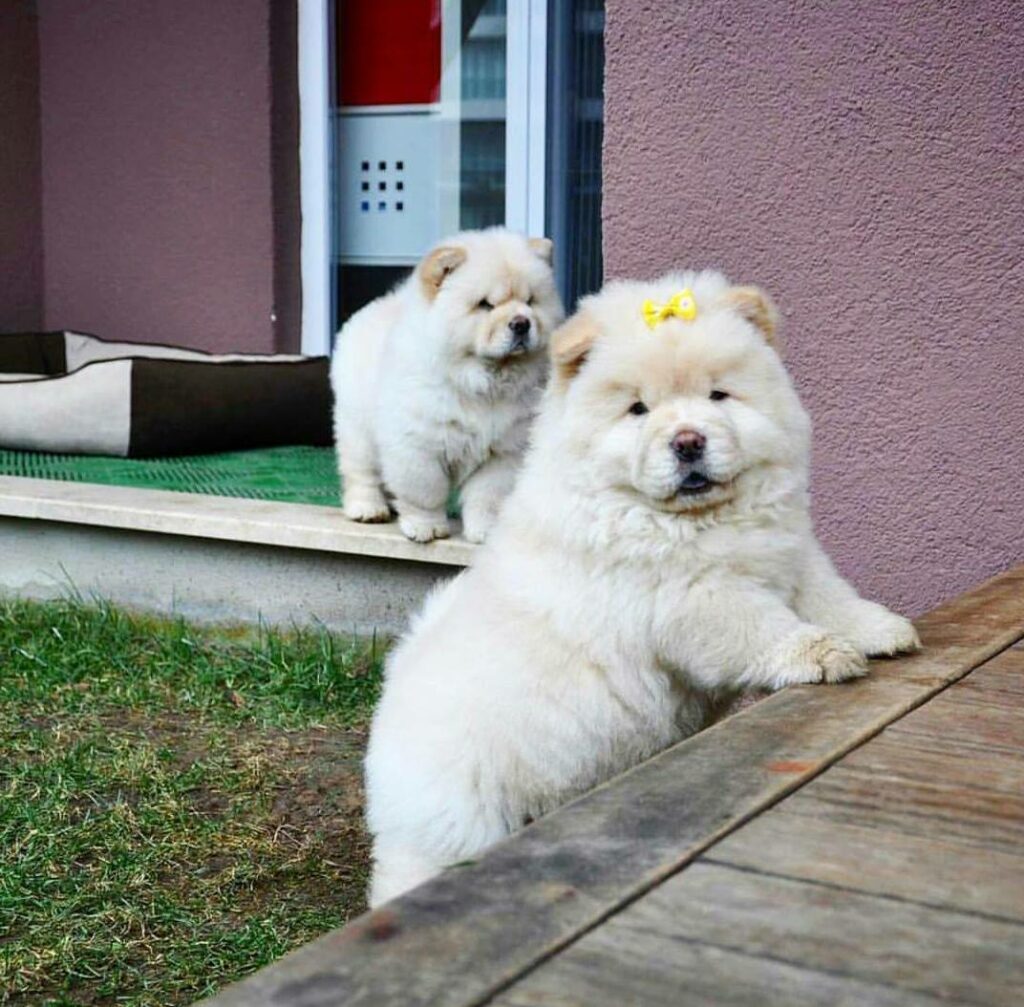
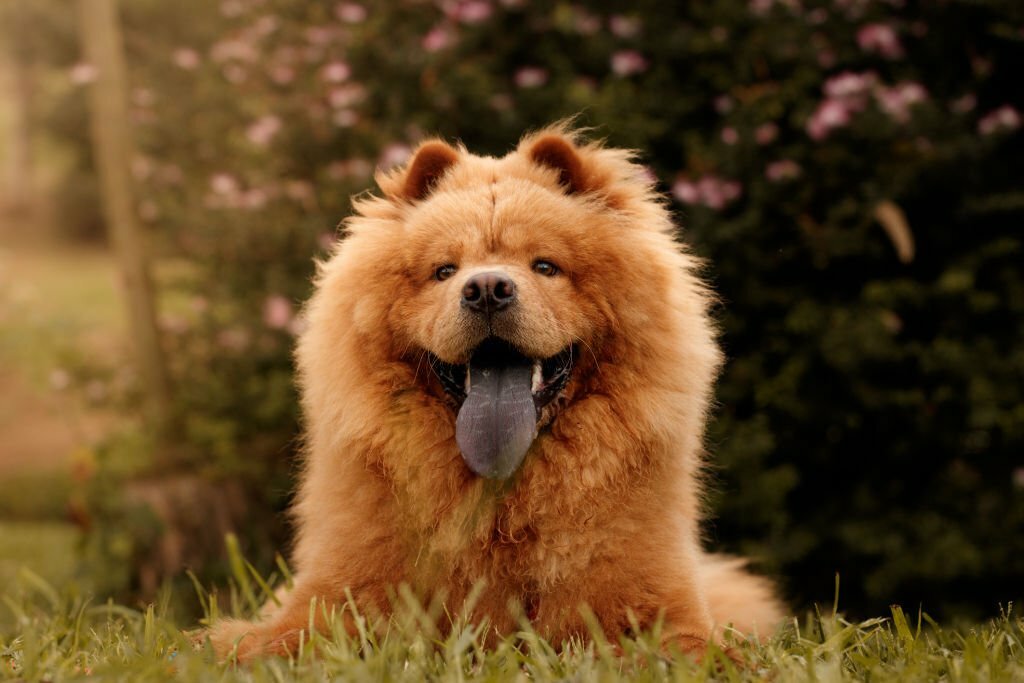
Overview
Chow Chows stand out with their distinctive lion-like mane and unique walk. This medium-sized breed is part of the Non-Sporting Group as recognized by the American Kennel Club, and it is known for its noble look and reserved personality.
Although John Egerton, a noted food historian, didn’t cover the Chow Chow in his writings, the breed’s storied past in China mirrors a culture’s rich history and social standing.
Chow Chows need regular, thorough grooming and sufficient exercise to maintain their stately appearance. They can adjust well to different home environments to maintain their stately appearance, which has helped them become a favored choice among dog lovers.
Key Features
Chow Chows are known for their distinctive features, such as their lush double coat, striking blue-black tongue, and noble, lion-like stance. Owners must commit to regular grooming for this breed, particularly when they experience intense shedding in the spring and fall. The double coat serves a dual purpose; the soft undercoat keeps the dog warm, while the thicker outer jacket offers protection from weather conditions.
| Feature | Description | Significance |
|---|---|---|
| Double Coat | Dense, with smooth or rough variants | Shields from weather and maintains body heat |
| Blue-Black Tongue | Distinct color feature | Signature herd trait and can indicate good health |
| Stature | Medium size, square build, lion-like | Commands attention and adds to their appeal |
The table above summarizes the Chow Chow’s key traits, showcasing their appealing looks and practical utility. These qualities make the breed both a delightful companion and an impressive figure.
Breed Origins
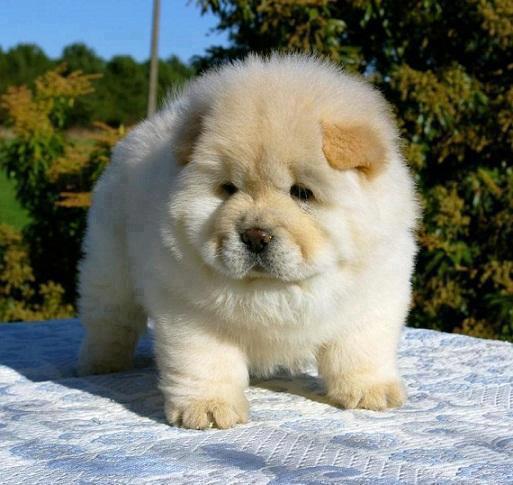
The Chow Chow breed has a rich history that dates back to ancient China. These dogs were more than just companions; they stood as symbols of power and safety, guarding the Chinese nobility.
A closer look at the Chow Chow’s origins reveals its evolution from ancient times.
These canines were not only companions but also revered guardians for Chinese emperors.
Their past roles have influenced their current behavior and distinct physical traits.
The Chow Chow has a strong presence in Chinese culture, appearing in everything from ancient texts to art.
Ancient Chinese Lineage
The Chow Chow dog breed has deep historical ties to China, appearing in art and artifacts that show its past association with Chinese aristocracy. Originating from China or possibly Arctic Asia, this breed has served various roles through the ages, including pulling sleds in wetlands.
Known by several names like black-tongue, wolf, bear, and Canton dog, these monikers hint at the Chow Chow’s varied uses and significance in Chinese culture. The term ‘Chow Chow’ was coined later by British traders in the late 1700s.
With its unique black tongue, the Chow Chow has symbolized status and practicality in Chinese history, securing its place as a lasting icon in the dog world.
Imperial Guardian Dogs
The Chow Chow stands out with its unique black tongue and thick fur, but these features reflect its prestigious past as a guardian for Chinese royalty.
Historically, these dogs weren’t just pets but integral to ancient China’s social and cultural life. As guardians, their imposing look and natural reserve were valued for symbolizing both status and security for the elite.
The Chow Chow’s muscular build and broad head give it a noble demeanor, fitting for its past amidst the luxurious settings of China’s imperial courts and gardens. It establishes its place as a breed that combines practicality with regal elegance.
Cultural Significance
The Chow Chow holds a special place in Chinese culture, with a history that weaves through the country’s mythology. Tales of large, black-tongued dogs resembling lions are thought to be early descriptions of the breed known as the Chow Chow.
Many of these dogs are registered yearly, showcasing their enduring significance in China. They carry an aura of enigma and nobility with their distinctive square shape, broad head, and thick coat. The breed’s severe and protective nature reflects the duties they once performed, maintaining their reputation as faithful pets.
Notably, even former U.S. President Calvin Coolidge was taken with the Chow Chow’s solemn appeal, proving the breed’s widespread popularity.
Physical Dimensions
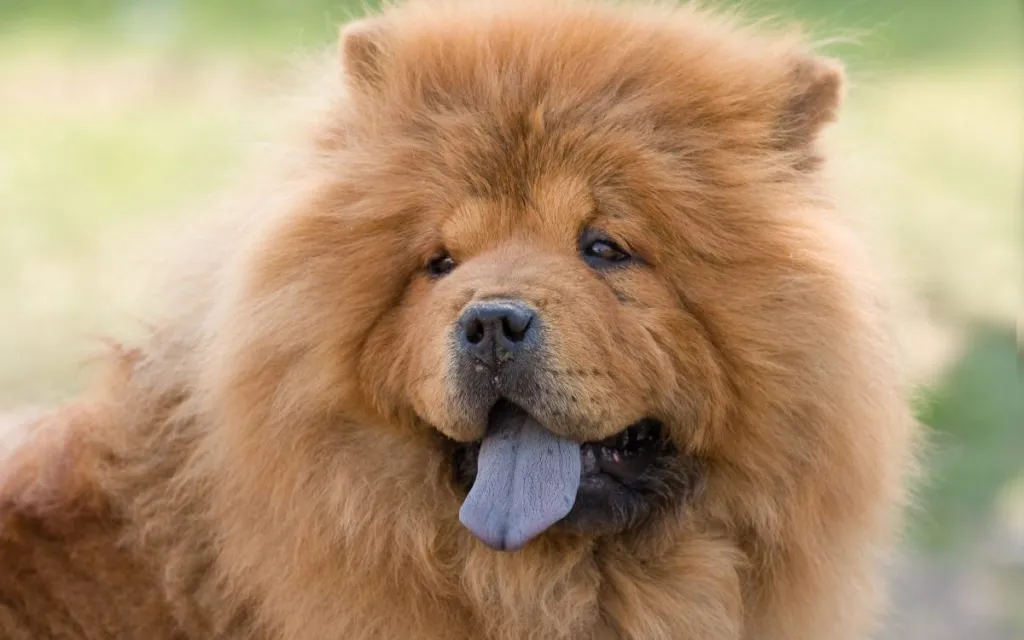
The physical dimensions of the Chow Chow are also critical to meet the breed’s standards, showcasing their unique, sturdy appearance that resembles a lion. Breeders and judges pay close attention to the size and weight of these dogs to ensure they meet the ideal breed characteristics.
Understanding how big an adult Chow Chow should be is vital for maintaining the breed’s distinct look. The weight range of a Chow Chow also plays a significant role in the dog’s overall health and lifestyle needs.
Measuring a Chow Chow’s height is done carefully to maintain its well-known square body shape. A close look at the body proportions reveals why the breed moves distinctively and why they possess such a notable presence.
Average Adult Size
Chow Chows are medium-sized dogs with adults usually standing about 17 to 20 inches at the shoulder and tipping the scales at 45 to 70 pounds. They sport a strong, square build with a muscular body fit for their history as working dogs. Their broad head adds to their noble look.
Male Chows often weigh more, reaching the top of the weight range. It’s vital to monitor their nutrition and physical activity to keep them healthy and avoid being overweight, which can worsen inherited health issues like hip dysplasia. This condition affects the hip joint and can cause discomfort and problems with movement.
Weight Range
Chow Chows are medium-sized dogs with a weight range that often falls between 45 and 70 pounds. Their distinctive square shape and broad heads give them a solid appearance. Keeping a Chow Chow’s weight within this range is critical to their health and overall well-being. Weight that is too high or too low can indicate health problems or a diet and exercise plan that isn’t working well.
Owners and vets should pay close attention to the weight and body shape of Chow Chows. Consistent monitoring and maintenance according to the breed’s standard are vital to avoid obesity and its associated health issues. A healthy Chow Chow is a happy companion; regular check-ups can help maintain their iconic look and vitality.
Height Measurement
Chow Chows generally stand between 17 and 20 inches tall at the shoulder, fitting well with their medium size and square shape. Their stature commands respect, with a solid frame that underscores their robustness.
Accurately measuring a Chow Chow puppy requires attention to detail because their thick fur can hide their height. Breeders and animal health experts use precise techniques to count them, vital for tracking their growth and ensuring their health.
The size of a Chow Chow is a significant part of the breed’s standards and is linked to their overall health. As these dogs grow, keeping a healthy balance between height and weight is crucial in avoiding joint problems and ensuring good physical health.
Body Proportions
Chow Chows stand out with their impressive height and strong and well-proportioned body, allowing for graceful and powerful movement. Their muscular build and deep chest are necessary for their distinctive square shape, with a body length equal to their height.
The breed’s thick double coat, smooth or rough, adds to their majestic look, especially the mane-like ruff around the neck that does more than look good; it supports their solid structure. Regular grooming is essential to keep their coat in good condition and help their skin during heavy shedding times, ensuring the coat protects and insulates the dog effectively.
Breed Size Variations
Chow Chows come in different sizes, with male dogs usually standing between 18 and 20 inches tall at the shoulder and female dogs a bit shorter at 17 to 19 inches. They fall into the medium-sized dog category, differentiating them from smaller breeds in height and weight.
These dogs have a sturdy, square-shaped body and a muscular build, complete with a broad head that showcases their strength. However, Chow Chows must maintain a balanced body weight and proportion to meet the breed standards.
Their impressive build is complemented by a deep chest and a full ruff around the neck, giving them a noble, lion-like look while allowing good movement and stamina.
Behavioral Traits
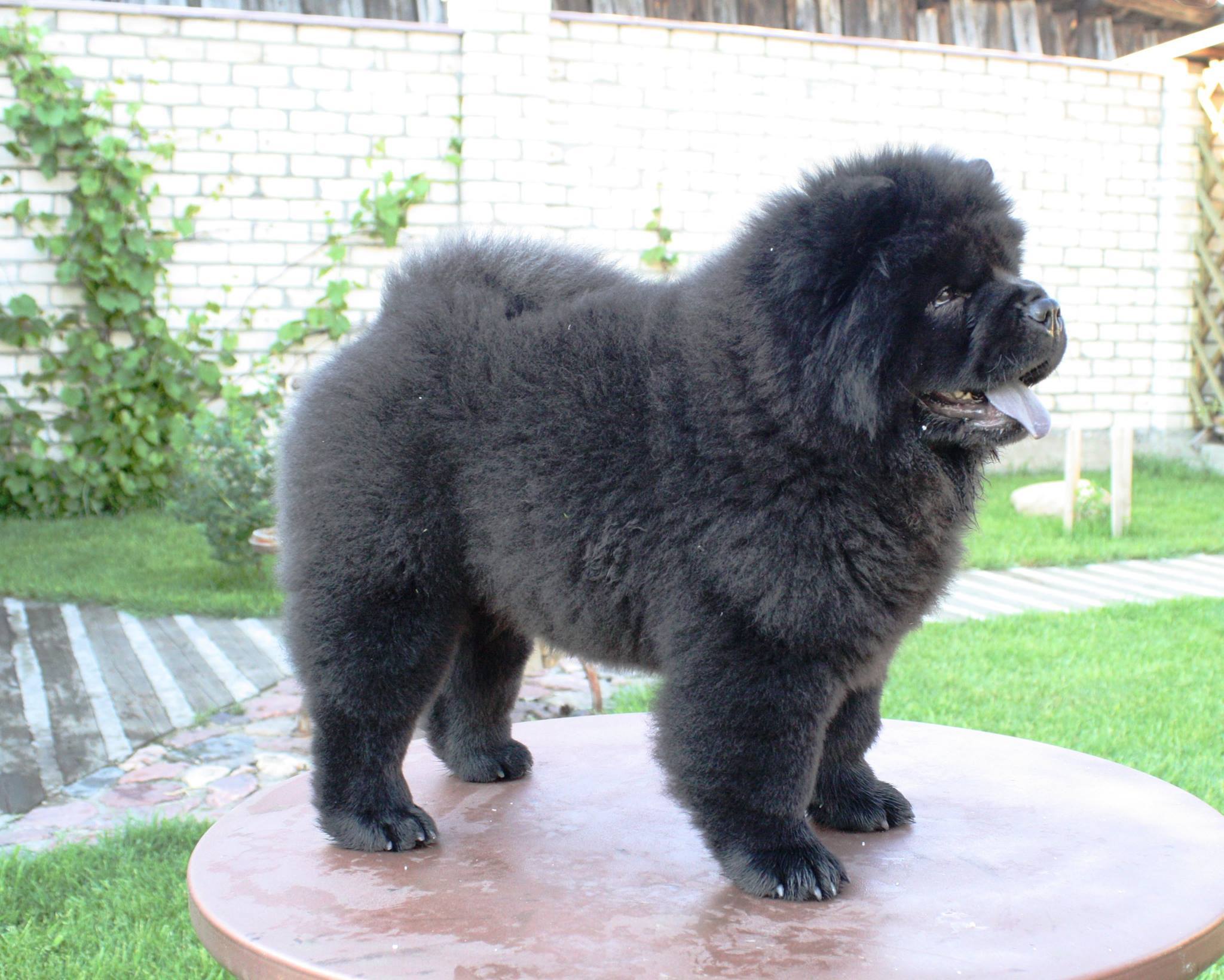
Chow Chows have distinct behavioral traits that owners must manage with care and insight. These traits stem from their heritage and environment, and shaping a friendly and well-adjusted Chow Chow involves being mindful of several critical aspects of their behavior.
Introducing Chow Chows to various people and situations early on can help lessen their natural suspicion of strangers. It’s also vital to know what may trigger aggressive behavior to keep your home and the wider community safe and peaceful.
To live harmoniously with other animals, it’s essential to have strategies for controlling the Chow Chow’s hunting instincts. Additionally, finding ways to reduce their anxiety when they’re alone is necessary for their emotional health.
Understanding these points can significantly improve your relationship with your Chow Chow and ensure they are a loving family member.
Socialization Importance
Socializing a Chow Chow is crucial in shaping its behavior and ensuring it gets along with people and other pets. These dogs are instinctive to protect, so introducing them to various environments and creatures early on is essential. Doing this helps prevent aggression, especially towards other dogs, and avoids unnecessary shyness.
Understanding dog behavior is essential for this process. Positive rewards and carefully introducing new experiences are the best ways to train them. This approach helps Chow Chows learn what’s a real threat and what’s not, leading to a balanced dog with strong, healthy bonds with its owners and staying calm around strangers.
Socializing, training, and positive reinforcement are crucial for Chow Chows to become a well-behaved family member.
Aggression Triggers
Knowing what causes aggression in Chow Chows is vital in preventing unwanted behavior and keeping everyone safe. These dogs may act aggressively when they feel their owner or territory is threatened.
Poor socialization during their early life can make Chow Chows more suspicious of new people, leading to aggression. Also, their strong hunting instincts could result in chasing behavior without proper training.
Behavioral training focusing on meeting new people and animals and consistent positive reinforcement is advised to manage these issues.
Prey Drive Management
Managing the prey drive in Chow Chows involves consistent training to channel their instincts appropriately. Understanding how these dogs think is critical to reducing their chances of aggressively chasing or acting toward other animals.
To prevent them from following their urge to chase, involve them in activities that are both controlled and satisfy their need to pursue, but within a safe setting. Securing the yard or play area is vital to stop them from roaming and potentially getting into dangerous situations.
Additionally, keeping them physically active and mentally engaged helps to manage their energy and prevent that instinct from becoming problematic. This approach to behavior training is essential for living peacefully with these devoted and protective pets.
Separation Anxiety Coping
Chow Chows cherish their independence, but they also form a solid attachment to their families, which can lead to anxiety if they’re left alone too much. To help your Chow Chow cope with being alone, start with socialization and routine training from a young age. This helps them feel more secure when you’re not around.
Even though they’re not the most active dogs, Chow Chows still need mental stimulation. Keep their minds busy with puzzle toys when you can’t be there to keep them company.
As an owner, you must look at your daily routine to ensure you’re giving enough time for bonding and activity with your Chow Chow. Reducing separation anxiety is more than just keeping them busy; it’s about ensuring they feel loved and mentally engaged, even when alone.
Obedience Training Benefits
Obedience training is vital for Chow Chows, teaching them to handle social interactions calmly and with manners that align with their noble character. Their strong protective nature might lead to excessive guarding behaviors without proper guidance. Through consistent training, these dogs can learn what’s expected in their surroundings and how to react appropriately, reducing the chance of aggression.
Regular physical activity is vital for Chow Chows, helping them use up their energy and allowing them to practice obedience commands regularly. Well-executed training can lead to a well-adjusted Chow Chow, ready to fit into lively and peaceful home environments.
Common Health Concerns
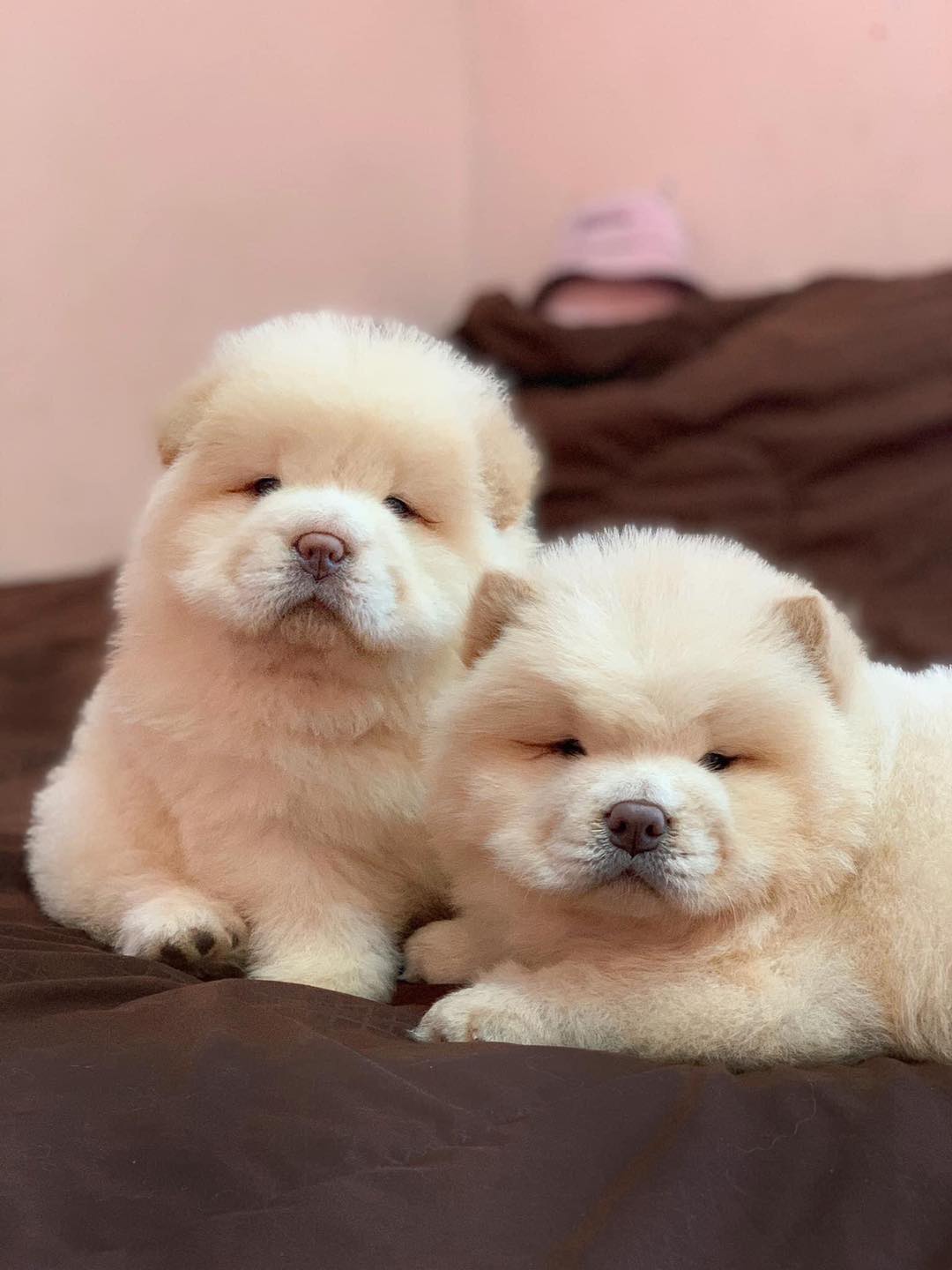
Understanding Chow Chows’ health is vital, especially since this breed is prone to specific genetic issues. One common problem is Hip Dysplasia, where the hip joint doesn’t form properly, leading to pain and difficulty moving. Their unique facial structure also makes them more likely to develop Entropion, a painful condition where the eyelid folds inward, harming the eye.
Hip Dysplasia is a notable occurrence in Chow Chows, affecting their quality of life by causing discomfort and limiting their movement.
Entropion presents as an inward rolling of the eyelid, which, if not treated, can damage the eye, but the risks can be reduced with proper care.
The skin folds characteristic of the breed of dog can trap moisture and bacteria, raising the chance of infection.
Being proactive about skincare and regularly checking for signs of trouble can help manage potential skin issues in Chow Chows.
Hip Dysplasia Prevalence
Many Chow Chows struggle with hip dysplasia, which calls for careful management and consistent check-ups with a vet. This health issue is expected in the breed; it’s important to note that it is essential to approach their care from various angles.
Studies show that genetics are a significant factor in whether a dog gets hip dysplasia, so breeders should use health conditions screenings before breeding to help lower the chances of it happening.
Paying close attention to a dog’s diet and exercise is critical to reducing the risks and slowing down the disease’s progress.
Treatments like dietary supplements and anti-inflammatory drugs can significantly affect their comfort and activity levels when a Chow Chow is affected by hip dysplasia.
Entropion Eye Condition
Chow Chows often face an uncomfortable eye condition called Entropion, where their eyelids turn inward. This condition requires surgery to fix the eyelids, prevent potential damage to the cornea, and relieve pain.
Symptoms like excessive tearing, squinting, and sensitivity to light are clear signs that a dog might suffer from Entropion, which, if left untreated, can lead to severe issues such as corneal ulcers or infections.
Vets typically conduct a thorough eye exam to assess the problem and perform surgery customized to the dog’s needs.
After surgery, close monitoring and consistent follow-ups with the vet are vital to ensure the Chow Chow’s eyes heal properly and to catch any other eye problems early on.
Skin Infection Risks
Chow Chows, with their distinctive double coat and facial folds, are prone to various skin issues, including infections. These can develop from trapped dirt and moisture in their dense fur and skin creases. Regular grooming is essential to remove dirt and prevent the growth of harmful bacteria and fungi.
Areas around the face and neck are particularly vulnerable and should be kept clean to avoid health problems.
When Chow Chows shed their undercoat, they need extra attention to maintain their skin’s well-being. Frequent and thorough brushing helps remove dead fur, reducing the chance of skin conditions like hotspots.
Owners should stay vigilant with their pet’s grooming routine to promote health and prevent dermatitis-related issues.
Maintenance Requirements
Chow Chows require regular care to stay healthy and happy. Owners should pay attention to their thick fur and need for regular exercise to prevent health issues. Let’s consider what it takes to keep these dogs in top shape.
Grooming Needs: Frequent brushing is vital to managing heavy shedding and keeping their coat in good condition. Planning a grooming schedule can help control the amount of hair around the house.
Shedding Patterns: Be aware of the times of year when your Chow Chow might shed more and have tools on hand to tackle the extra hair. Regular brushing during these periods is even more critical.
Activity Level: Chow Chows don’t need extreme exercise but should have a consistent, moderate activity to stay fit and avoid weight gain. Walks and playtime should suit their energy levels.
Nutritional Needs: A well-rounded diet is vital for their health, providing all the necessary nutrients to support their metabolism and prevent dietary issues. Consult with a vet to find the best food for your Chow Chow.
Taking care of a Chow Chow isn’t just about meeting their physical needs; it’s also about nurturing their well-being. With the right approach, these distinctive dogs can lead fulfilling lives.
Grooming Frequency
Grooming your Chow Chow at least twice weekly is critical to controlling their shedding. Choosing the right tools, like a pin brush, can work through the thick double coat of smooth or rough textures.
A good pin brush has wire pins with plastic or rubber tips, making it practical to get through the dense coat and prevent tangles, especially in their distinctive mane that can easily get matted. Regular grooming sessions keep your Chow Chow looking great and help prevent excess hair build-up and skin issues by removing dead fur.
Shedding Levels
Chow Chows are known for their significant shedding, so owners must have a consistent grooming plan. These dogs shed even more twice yearly in spring and fall, requiring extra care.
Their distinctive mane and thick undercoat need the right grooming tools to keep their skin unharmed. A medium-coarse brush works best for general grooming, while a slicker brush is better for sensitive areas. A pin brush is essential for removing loose hair to prevent knots and ensure the dog’s coat stays healthy.
Keeping your Chow Chow well-groomed is vital for their health and ensures they look fabulous no matter their coat color.
Exercise Needs
Shifting focus from grooming, Chow Chows need regular exercise to stay healthy and happy. These dogs have a moderate energy level, so their daily workouts should be adjusted accordingly. Regular activity helps prevent weight gain and reduces behavioral problems caused by excess energy.
Owners should craft a daily schedule that includes physical workouts and mental challenges. This could involve energetic walks, playful interactions, and time in a secure yard. But it’s important to avoid overworking them, as too much can strain their joints and tire them out.
Paired with a proper diet, exercise is vital for maintaining the well-being and happiness of these noble dogs.
Dietary Considerations
Chow Chows need a diet that matches their energy needs and keeps them healthy. Given their risk of gaining extra weight, it’s wise to control their intake of fats and carbohydrates.
Protein is vital for keeping their muscles in good shape, especially since they are a medium-sized breed.
Owners should avoid giving them green tomatoes because they’re unsafe for these dogs. Similarly, mustard seeds could be toxic and are best avoided. However, a little bit of cider vinegar might help their digestion and improve the quality of their coat, as long as it’s used in moderation.
The right diet plan is vital to keep your Chow Chow in top condition.
Health Check Regularity
Chow Chows need a veterinary check-up at least once a year to keep them healthy. Routine health checks are vital to catching problems early, especially since this breed is prone to hip dysplasia and eye conditions.
Their majestic appearance and thick mane-like coat demand careful maintenance from their owners. Owners must groom their Chow Chows multiple times per week, as this helps prevent their fur from tangling and allows for early detection of any skin problems.
A balanced approach to daily exercise is also vital, especially since these dogs can overheat quickly. This will help ensure your Chow Chow enjoys a fulfilling and healthy life.
Dietary Needs
Caring for your Chow Chow’s diet ensures they live a healthy and whole life. It is critical to tailor their meals to meet their breed-specific needs and various life stages. It’s necessary to create a feeding plan that suits their metabolism and keeps their energy balanced to avoid health complications.
A balanced diet is vital in maintaining your Chow Chow’s health and reducing the risk of breed-related issues. Chow Chows have specific dietary needs due to their distinctive physiology and metabolism, which must be met. It’s essential to find the proper feeding schedule to help your Chow Chow stay at a healthy weight and prevent obesity. Be mindful of how a Chow Chow’s age and activity level influence their food requirements and adjust their meal sizes as needed.
A balanced diet, specific dietary needs, and healthy weight are crucial for the well-being of your Chow Chow.
Balanced Diet Importance
A balanced diet is vital to the health and longevity of a Chow Chow. It provides all the nutrients this breed needs to thrive. Proper nutrition is essential to maintaining their sturdy physique, preserving the quality of their dense double coat, and promoting overall health and energy. A well-planned diet can help prevent common health problems in Chow Chows, such as obesity and heart issues.
Nutrition also affects a Chow Chow’s behavior. A healthy diet supports a calm demeanor, which is crucial since Chow Chows need early socialization to avoid aggression. A good diet is essential for a Chow Chow to adapt well to various living situations and to lead a happy, healthy life.
Special Nutritional Requirements
Chow Chows have special dietary needs due to their physical makeup, which includes taking care of their joints and avoiding weight gain. Adding ingredients like glucosamine and chondroitin to their food helps to keep their cartilage and joints healthy. This is particularly important because these dogs are at risk for conditions like hip and elbow dysplasia.
Managing their food intake is critical, especially since Chow Chows can become less active in warm weather, increasing their chances of becoming overweight. High-quality protein is essential to support their strong muscles, and omega fatty acids are beneficial for maintaining their thick fur.
For those Chow Chows with allergies, selecting hypoallergenic food options is crucial. A diet planned by a professional can help ensure these dogs stay healthy and at an ideal weight for their entire lives.
Feeding Frequency Recommendations
Feeding your Chow Chow the correct amount is critical to their health and well-being. Adult Chow Chows should eat two meals daily to avoid becoming overweight. Puppies need to eat more often because they are growing fast and need extra nutrition.
It’s essential to choose a high-quality dog food that meets the nutritional needs of a Chow Chow.
Always follow the feeding guidelines and measure the food to help your dog stay healthy. It would be best if you talked to a vet to get advice on the best feeding routine for your dog. They can help you understand the right balance to ensure your Chow Chow receives the nutrients they need without overfeeding or underfeeding them.
Proper feeding will help your dog stay active and live a whole life.

